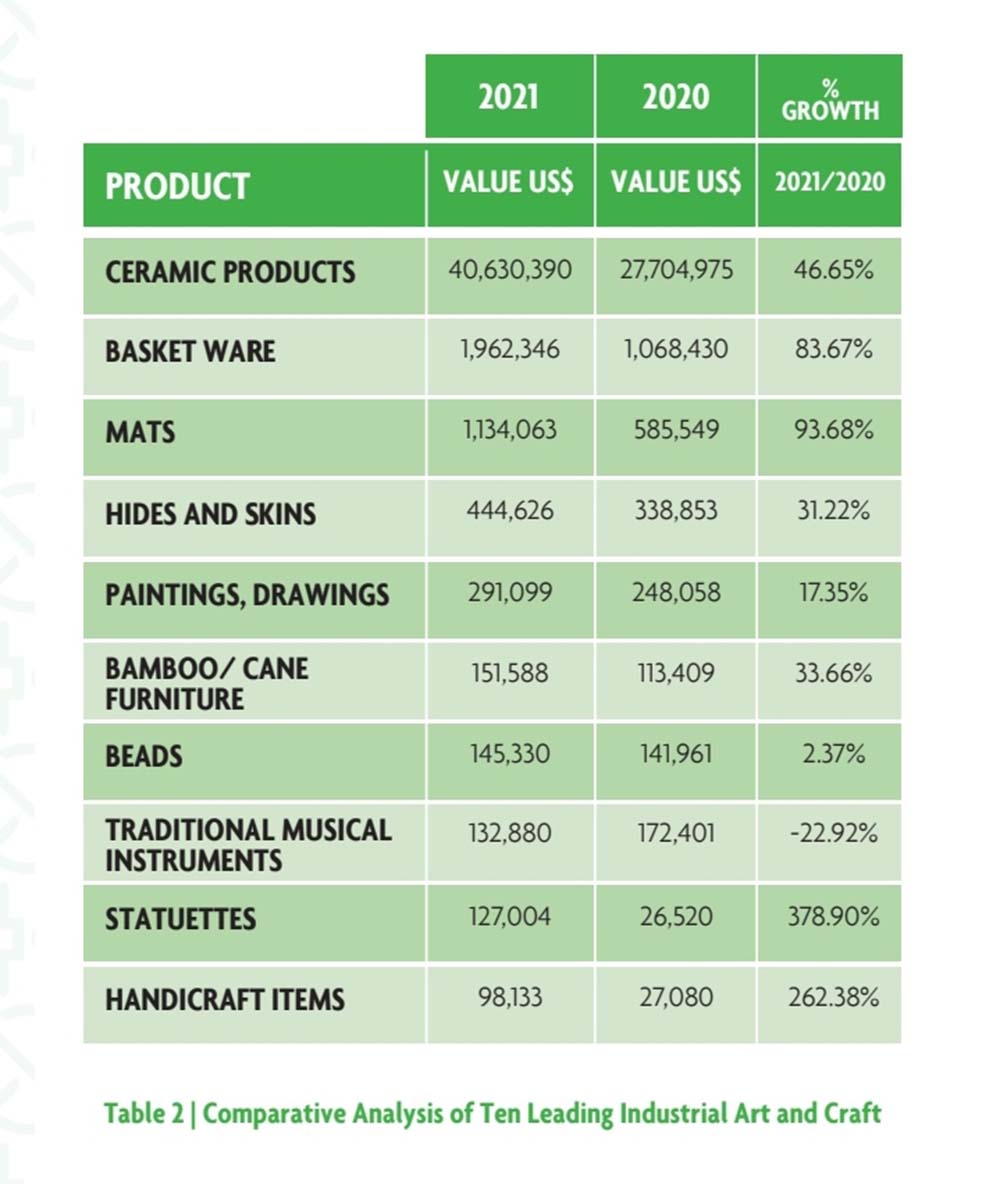
Last year, the industrial art and craft sub-sector contributed to over US$ 45 million (1.36 per cent) to Ghana’s non-traditional exports (NTEs) earning, a report on ‘Analysis of Non-Traditional Export Statistics’ has revealed.
The figure shows an increase of 47.56 per cent from US$30,630,023 in 2020.
The report, which was launched in Accra by the Ghana Export Promotion Authority (GEPA), said ceramic products were the top earner, earning US$ 40.6 million within the sub-sector with a contribution of about 90 per cent.
The lowest earner in this category was handicraft items which earned US$98,130. The total value of the top 10 earners of this sub-sector amounted to US$45,117,459, representing 99.82 per cent of the total industrial art and craft products.
The top 10 earners were ceramic products, basket ware, mats, hides and skins, paintings, drawings, beads, traditional musical instruments, bamboo/ cane furniture, statuettes and handicraft items.
Growing handicrafts
The Chief Executive Officer (CEO) of GEPA, Dr. Afua Asabea Asare, said during the launch of the report that the opening of the refurbished Aburi Crafts Village in the Eastern Region in January this year was part of efforts to make Ghana a leading exporter of art and craft in the West Africa sub-region.
Consequently, she said the facility had been modelled into a multi-purpose centre for locally produced handicrafts and venue for international art shows and had been partitioned to reflect the various aspects of Ghanaian homes; visitors will now find furniture, accessories and décor pieces for the living area, bedroom, dining area, kitchen and hall utility spaces.
It has a modern showroom and exhibition centre to display the beautiful handicrafts. The multi-purpose facility will function as a market centre for locally produced handicrafts and a venue for international art shows,” she said.
Dr Asare said the items found on display within the facility had been skillfully produced by craftsmen and women some of whom have shops in the village and some from other associations beyond Aburi.
Market destinations
The NTE sector is categorised into three main sub-sectors: agriculture, processed/semi-processed, and industrial art and craft sub-sectors.
Earnings for the sector in 2021 amounted to US$3.3 billion, reflecting an increase of about 17 per cent over 2020 earnings of US$ 2.84 billion.
The Netherlands was the lead market destination for NTEs, absorbing US$423.96 million worth in 2021.
The three ECOWAS countries on the list — Burkina Faso, Togo and Senegal — were second, fourth and ninth respectively, in the top 10 market destinations.
Burkina Faso came up as the lead destination in ECOWAS and Africa for NTEs. It maintained its position as the top destination in 2021 from 2016, 2017, 2018,2019 and 2020. Togo and Senegal were the second and third lead destinations in ECOWAS, respectively.
Burkina Faso represented 34.75 per cent of total top 10 ECOWAS markets, showing a growth of 51.17 per cent over its previous year’s contribution.
Sierra Leone was the 10th and grew by 35.5 per cent over 2020 performance. Average export value by the 10 top ECOWAS States in 2021 stood at US$105.59 million relative to US$76.62 million in 2020. This shows a growth of 37.81 per cent growth in average value of the top 10 ECOWAS States.
NTE performance along the Abidjan-Lagos Corridor showed growth in NTE earning from Cote d’Ivoire, Togo and Nigeria. Earnings from Benin, however, showed a fall due to the imposition of full import duties on ETLS — approved products that ought to have attracted zero-rated duties as stipulated by ECOWAS Protocols.

